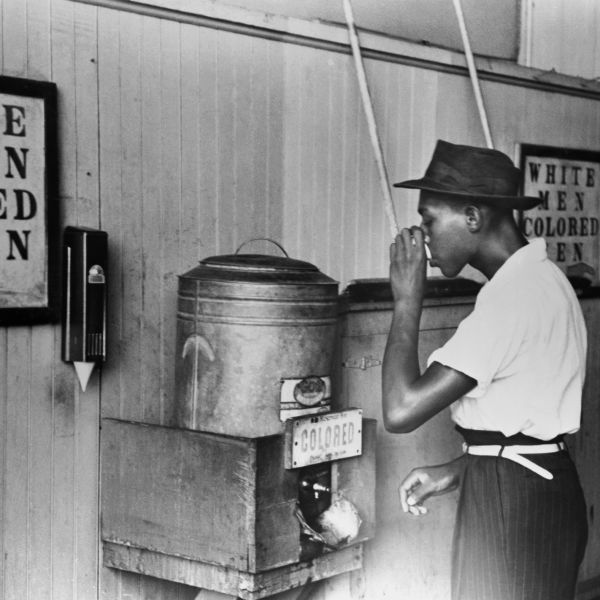
Black codes and Jim Crow laws were laws passed at different periods in the southern United States to enforce racial segregation and curtail the power of Black voters.
After the Civil War ended in 1865, some states passed black codes that severely limited the rights of Black people, many of whom had been enslaved. These codes limited what jobs African Americans could hold, and their ability to leave a job once hired. Some states also restricted the kind of property Black people could own. The Reconstruction Act of 1867 weakened the effect of the Black codes by requiring all states to uphold equal protection under the 14th Amendment, particularly by enabling Black men to vote. (U.S. law prevented women of any race from voting in federal elections until 1920.)
During Reconstruction, many Black men participated in politics by voting and by holding office. Reconstruction officially ended in 1877, and southern states then enacted more discriminatory laws. Efforts to enforce white supremacy by legislation increased, and African Americans tried to assert their rights through legal challenges. However, this effort led to a disappointing result in 1896, when the Supreme Court ruled, in Plessy v. Ferguson, that so-called “separate but equal” facilities—including public transport and schools—were constitutional. From this time until the Civil Rights Act of 1964, discrimination and segregation were legal and enforceable.
One of the first reactions against Reconstruction was to deprive African-American men of their voting rights. While the 14th and 15th Amendments prevented state legislatures from directly making it illegal to vote, they devised a number of indirect measures to disenfranchise Black men. The grandfather clause said that a man could only vote if his ancestor had been a voter before 1867—but the ancestors of most African-Americans citizens had been enslaved and constitutionally ineligible to vote. Another discriminatory tactic was the literacy test, applied by a white county clerk. These clerks gave Black voters extremely difficult legal documents to read as a test, while white men received an easy text. Finally, in many places, white local government officials simply prevented potential voters from registering. By 1940, the percentage of eligible African-American voters registered in the South was only three percent. As evidence of the decline, during Reconstruction, the percentage of African-American voting-age men registered to vote was more than 90 percent.
African Americans faced social, commercial, and legal discrimination. Theatres, hotels, and restaurants segregated them in inferior accommodations or refused to admit them at all. Shops served them last. In 1937, The Negro Motorist Green Book, a travel guide, was first published. It listed establishments where African-American travelers could expect to receive unprejudiced service. Segregated public schools meant generations of African-American children often received an education designed to be inferior to that of whites—with worn-out or outdated books, underpaid teachers, and lesser facilities and materials. In 1954, the Supreme Court declared discrimination in education unconstitutional in Brown v. Board of Education of Topeka, but it would take another 10 years for Congress to restore full civil rights to minorities, including protections for the right to vote.

